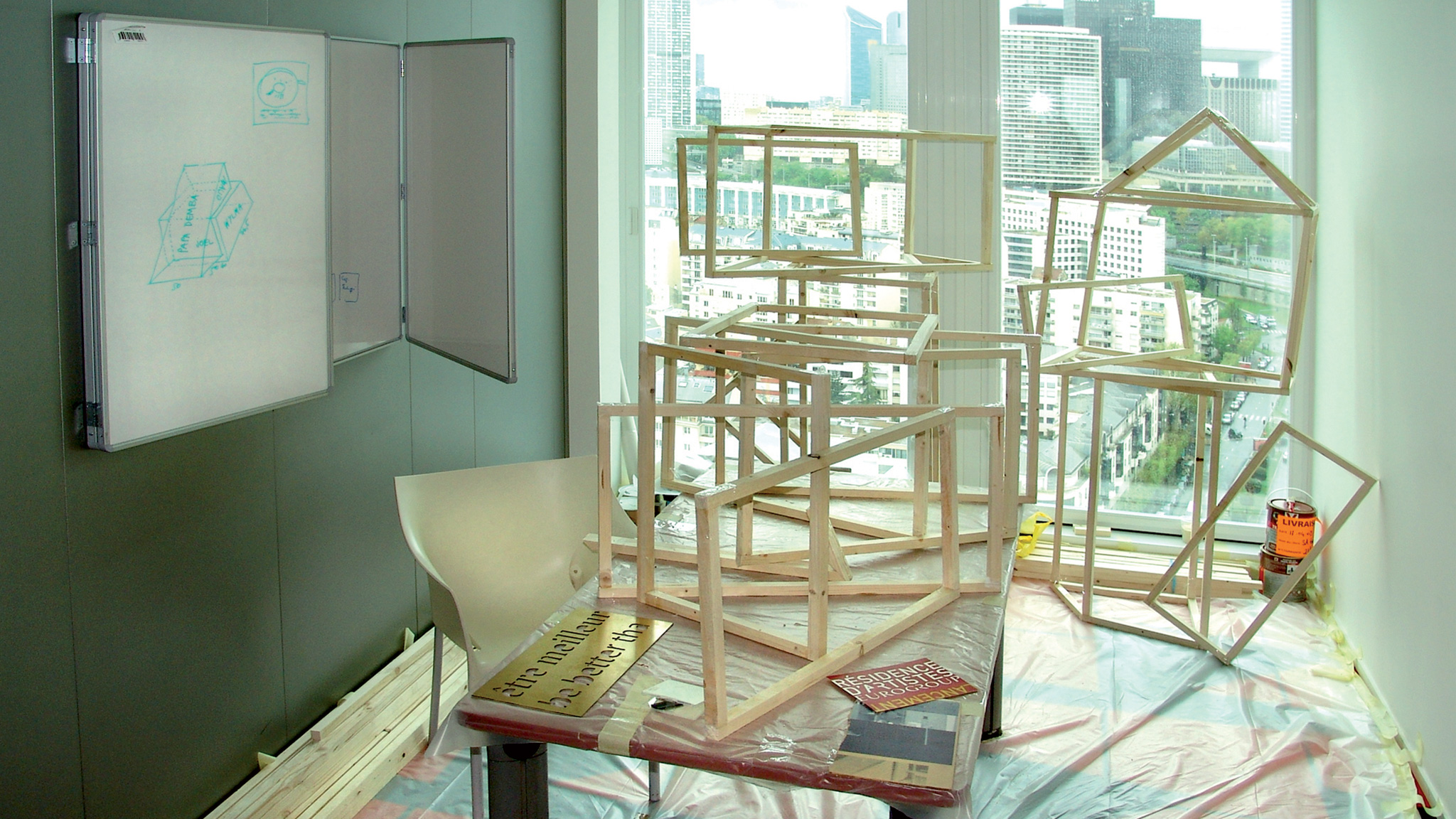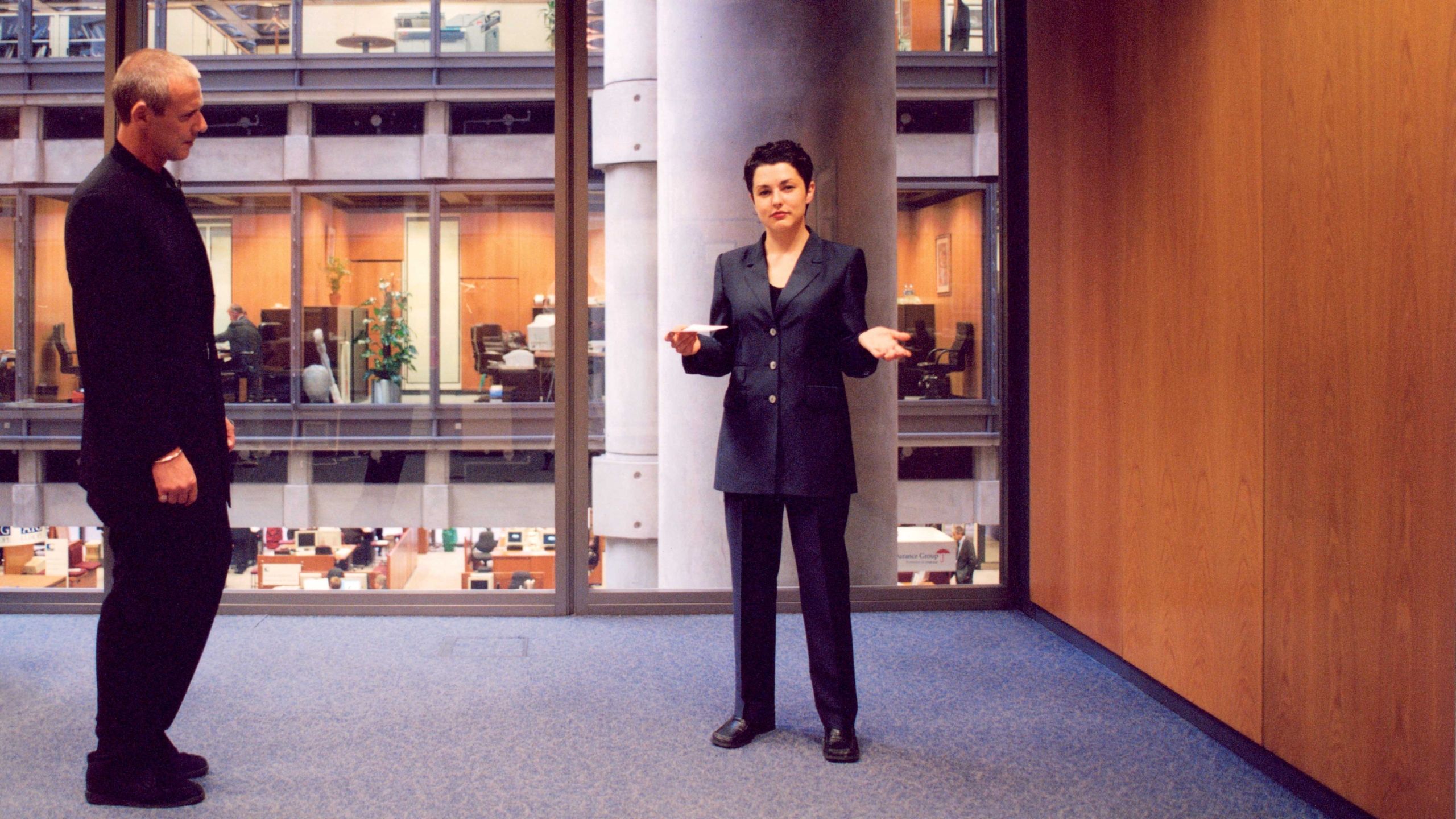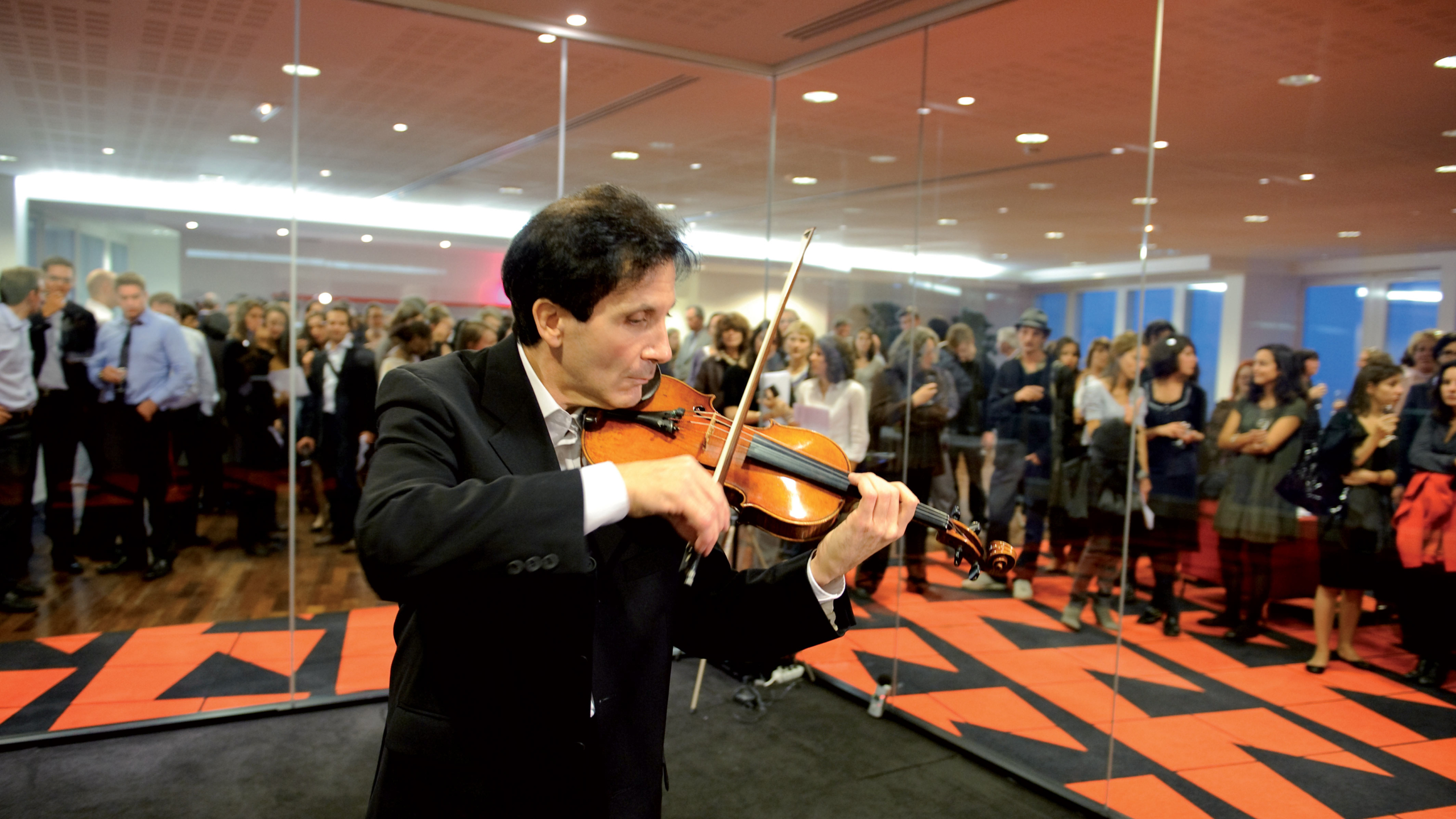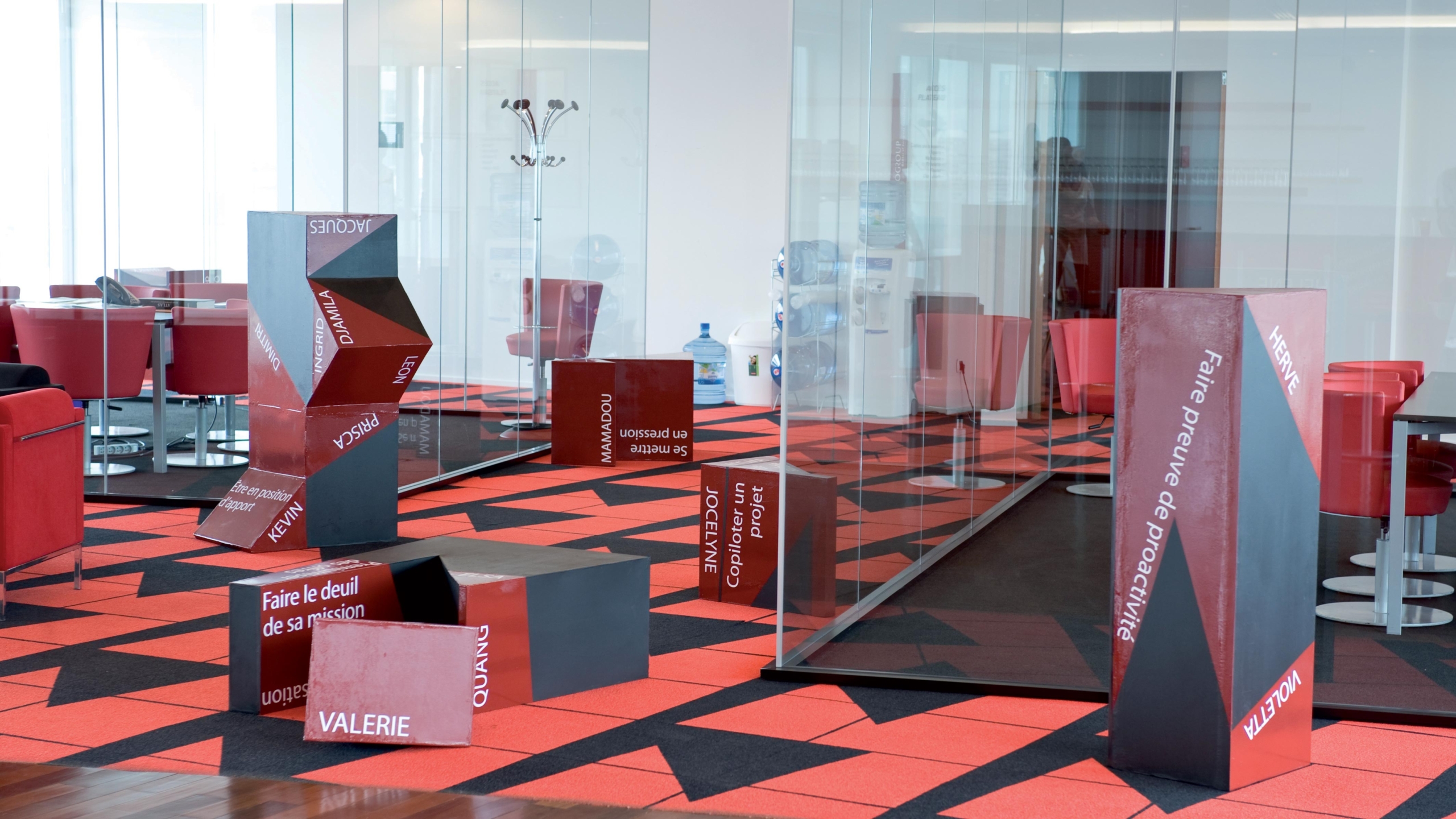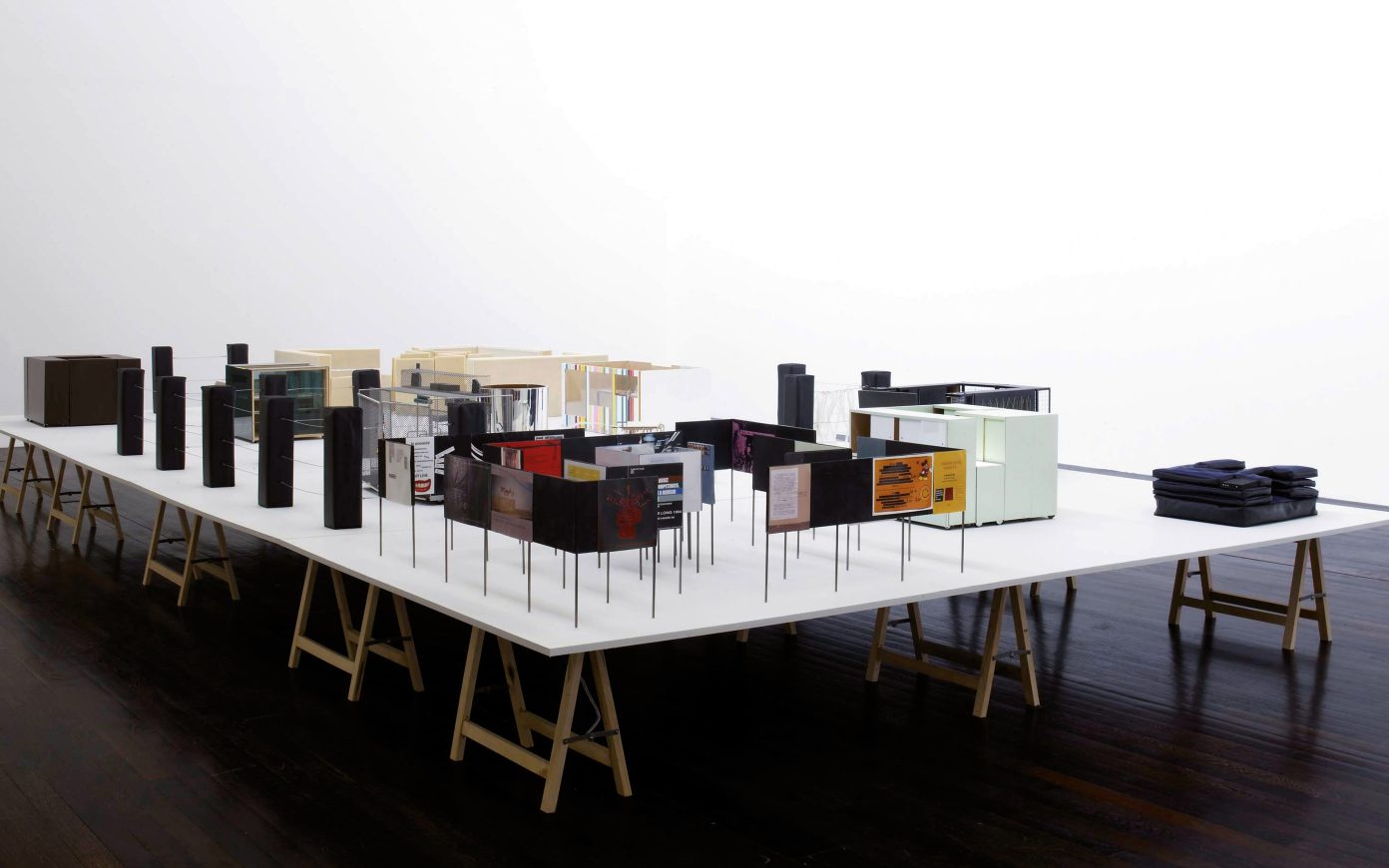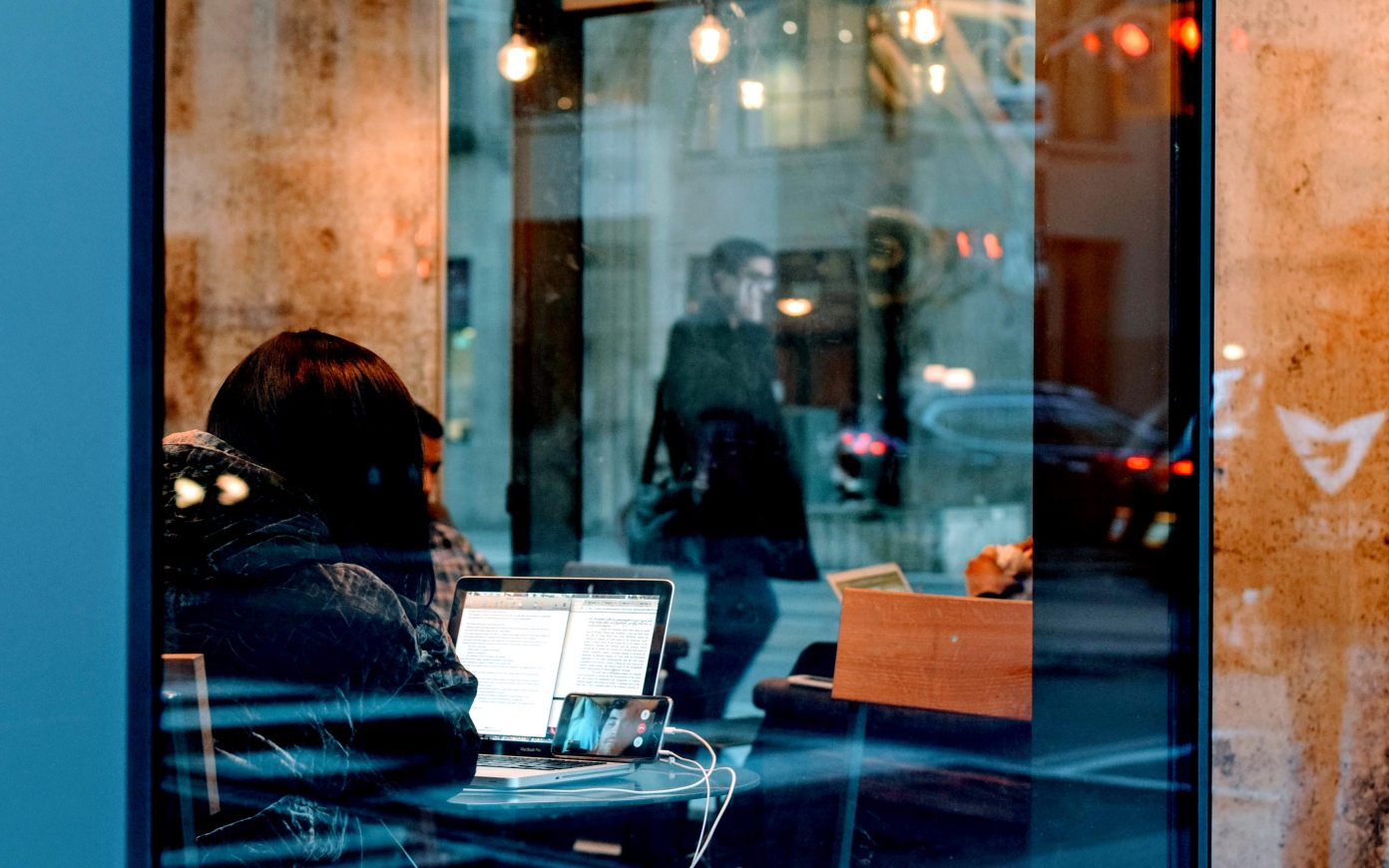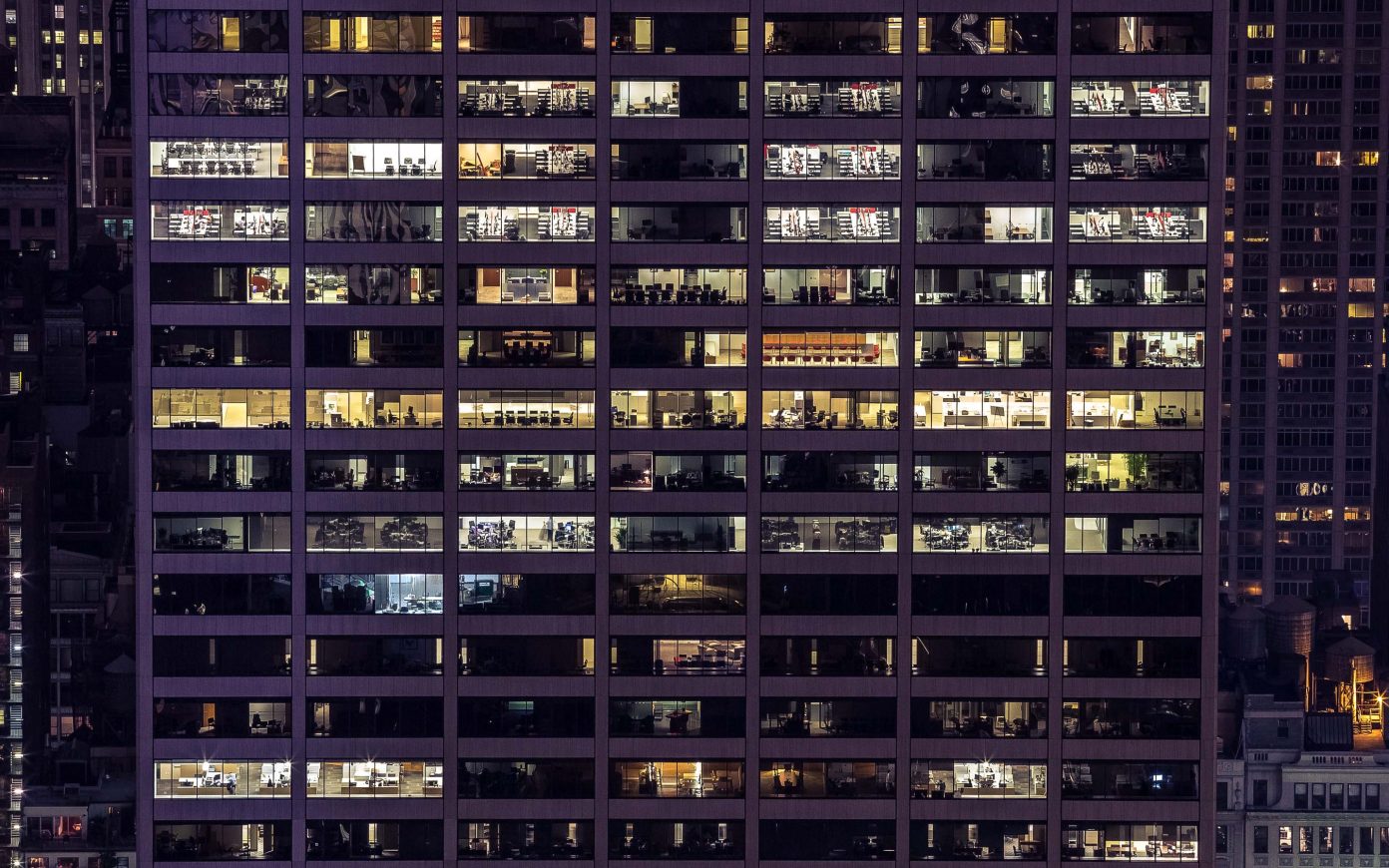Reflecting on her experience of a residence at the Conseil Général d’Ille et Vilaine for the Ateliers de Rennes 2008, French artist Marie Reinert emphasizes not the reciprocal misunderstanding of it but the effective divergence. «When I ask agents of the Archive Departments to think of an action at work, they have in mind the consequences of their work, in other words their productivity, whereas, what I had in mind by action would be something independent of their own results in terms of productionIn Valeurs croisées, cat. exp. Les Ateliers des Rennes, Les Presses du réel, Dijon, 2008, p. 161. Marie Reinert was invited into the group SouRCES of the Ateliers de Rennes. See above..» Using this friction between the worlds of art and of the business of the importance given to process versus to results as inspiration, her video Faire (2008) reflects on the way in which the gestural activity of employees is influenced by the spacio-temporal organization of work. Taking the form of an abstract choreography, action at the same time seeks to optimize efficiency while cultivating its own intrinsic value.
A « foreign body » in the company
The introduction of a foreigner—an artist—within a universe regulated by its own laws—the business—and the manner with which this «intrusion» takes place is the basis of this text dedicated to the artist residences in businesses and of the works which are created there.
On the side of and beyond the artists and collectivesFrom Jain Baxter&, creating in 1966 the N.E. Thing Company to Gilles Mahé and his company Gilles Mahé & Associés S.A., from Philippe Thomas and his label Les ready-made appartiennent à tout le monde® (1987-1993) to Tatiana Trouvé and her Bureau des Activités Implicites, from Yann Toma president since the end of the 1990’s of the society Ouest-Lumiere to Jean-Baptiste Farkas the creator of IKHEA©SERVICES, the field of mimicking relationships, activists, inspiration concerned with the object of art or of the risk of becoming a good or service is very well explored, theorized, made the object of numerous publications and researches. We cite hear as a principal source for Francophone reference: the line of research Art & Flux (www.art-flux.org), integrated with the d’Étude et de recherche en Arts Plastiques of the Université Paris I-Sorbonne (The Study and Research in the Physical Arts of Paris I-Sorbonne University) and a collective of close to 150 «artist-entrepreneurs» and «critical businesses.» who have thought about the office, the economic world, and its particular ecosystem, or its relationship with notions of value, experience, performance, use, and productOn the subject of notions of performance and product, we call out the work of Martin LeChevallier titled L’Audit (2008) that the artist presents in his terms: «To the end of assuring the pertinence of his work and by measure of his chances of success, Martin LeChevallier asked a consultancy agency to submit to him an «audit of artistic performance.» See at http://www.martinlechevallier.net/audit.html., the end of the 20th century and the beginning of the 21st century has seen the emergence, within highly varied contexts, of a new type of artist: the artist in company, or more-so the artist in residence in company. Here the artist rests within the scope here of tertiary business, dedicated to essentially immaterial creation.
In effect, the model of the artist in business for material production or—to reappropriate a political term—of «the established artist» born from the 1960’s with experiences which, as in the canon of Régie Renault, spawn collective collaboration—and to the only direct beneficiary, the artist—creators and workersWith some recent works, the image of the artist as entrepreneur or as the «prototype of the worker of tomorrow» is imposed: Luc Boltanski & Eve Chiapello, Le Nouvel esprit du capitalisme, Gallimard, Paris, 1999; Pierre-Michel Menger, Portrait de l’artiste en travailleur. Métamorphoses du capitalisme, La République des Idées, Le Seuil, Paris, 2002 ; Hélène Mugnier, Art et Management, Demos, Paris, 2007 ; Karine Lisbonne & Bernard Zurcher, L’Art avec pertes et profits, Flammarion, Paris 2007.. Within this realm, the business is for the artist a raw material, in the economic sense of the term, and its methods of production, material, or competencies comprise a final benefit, allowing the artist to plug in naturally into the production. In the case envisioned here, the business is an ecosystem to observe, a universe of possibilities to which the artist brings a subjectivity and vision, in accordance with its practice apart from the business. In mirror, the employees do not gain knowledge or expertise, merely a simple broadening of horizons. The work is no longer a «product» but a possibility of «reconciliation,» the result and condition of a common sharing of experience. At the heart of a corpus, the appropriateness of realized works in the realm of collaborations with businesses—which these would be—and those realized in other contexts—which involves interaction with a studio or with other collaborators—is one of the main criteria for judging the viability of these experiences.
In the course of centuries whereby the corporate sphere has cannibalized the public and private spheres, several types of residences in business have developed—with diverse goals and benefits. This text is interested in a specific type of residence, in which the artist is interested undeniably in the corporate, that where there is no objective or requirement from the host enterprise—in terms, for example, of motivation, of communication, or of driving change—assigned to the artist. This is not for office art, just an artist temporarily installed at the officeAfter now a good decade, the methods of mobilization and of creativity for making the artist and instrument for HR and R&D have been developed. Art here is secondary, no longer an end but a means. In fact, all these experiences linking art and business are far from being similar and their diversity reveals a gap in understanding, engagement, and the attentions of businesses vis-à-vis contemporary creation. Between the collaboration to create a product, price setting, stimulation of steams for the creation of art, or the instigation of a collective of dialogues between the worldsof art and business, the differences are patent and the criteria of values varied.. In a word, as long as the liberty of each party is assured, guaranteeing an artistic integrity and a level of respect from employees: the artist is free to satisfy his or her will of an inherently unpredictable nature; the employees and collaborators free to adhere and to participate in the development of the residence.

